| audio & music workstation with 4096 polyphonic voices | ||||||||||||||||||||||||||||||||||||||||||||||
|
Cyclone IV + Spartan6 ADC-board Full Stereo Digital IO Bus No typical MIDI Delay because of high bandwidth 4096 oscillators 4096 synthesis voices 1024 midi channels 16384 LFOs 4 individual audio dsp elements 48kHz 96kHz 192kHz 384kHz 768kHz sample rates 1280x1024 SVGA 1600x1200 VGA / DVI 1920x1080 HDMI 48kHz 96kHz 192kHz 384kHz Audio DSP demo sound demo track Attention: Because of many downloads, the number of demos have been reduced |
Base Hardware Unit Altera Cyclone IV + ADC/DAC board The new Altera Cyclone IV DE2-115 platform from Terasic is used to implement and test the parts of the AUDIO DSP. It performs IO communication and is the master of the sub modules. Currently there is one music module driving one synthesizer module and one audio DSP module directly. This gives the option to generate and process all music and audio data with low latency avoiding any MIDI issues. 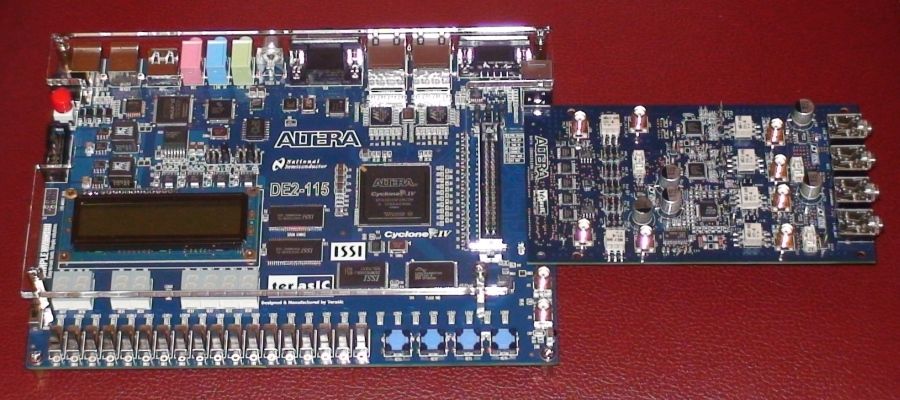 The board is attached to both a stereo audio codec chip and high speed ADCs and DACs which are used for signal observation during development process. They can also by used for analog monitoring signals on a common oscilloscope. It also contains a Video interface to VGA/HDMI to directly monitor spectral audio responses acting like a graphical equalizer. 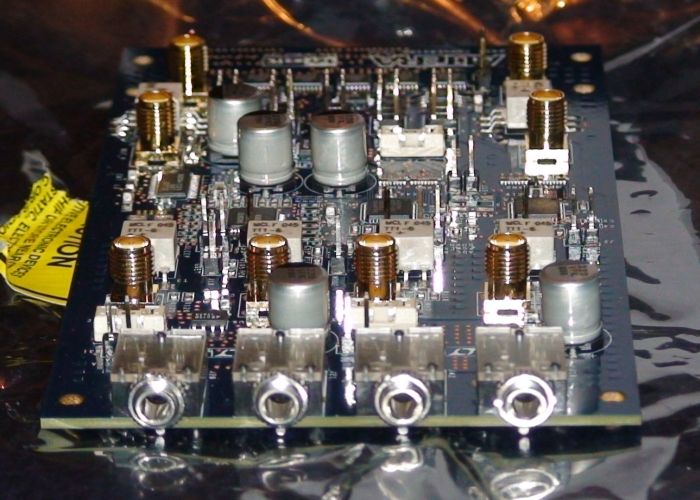 Terasics daughter board for the Altera Cyclone IV is a perfect extension to drive and test the audio DSP system: It comes with both audio IO connectors (line, mic etc.) and high speed DACs with 250 MHz over SMA connectors. Full speed 200 MHz audio DSP output shows up here, using dithered PDM with 14 Bits finally achieving >20Bits with a simple analogue AA-filter. Together with the main board 6 analog audio out channels are available. The 4 self built pdm-channels are used mainly for bass treatment / bass array. Other daughter boards can be linked by audio wire or external MIDI over S/PDIF. This both ensures high MIDI bandwidth much beyond the current MIDI standard. For example with common studio music setups, the transmission of sixes-data and tone data for e.g. 32 MIDI channels will typically require a period of nearly 70ms which makes it impossible to generate musically synchronous data in real time. Remember that already 2ms delay between two channels might be discovered as echo. With the FPGA based digital audio workstation, 1024 MIDI channels could be transmitted in less than one sample of 96kHz! This makes it first possible to define echo's and reverbs in the midfield and install arpeggiator modules which generate reflections and where repeated notes perfectly fit to the music data stream. Music Box / MIDI Engine 8 x 16 primary MIDI channels, 1024 secondary channels 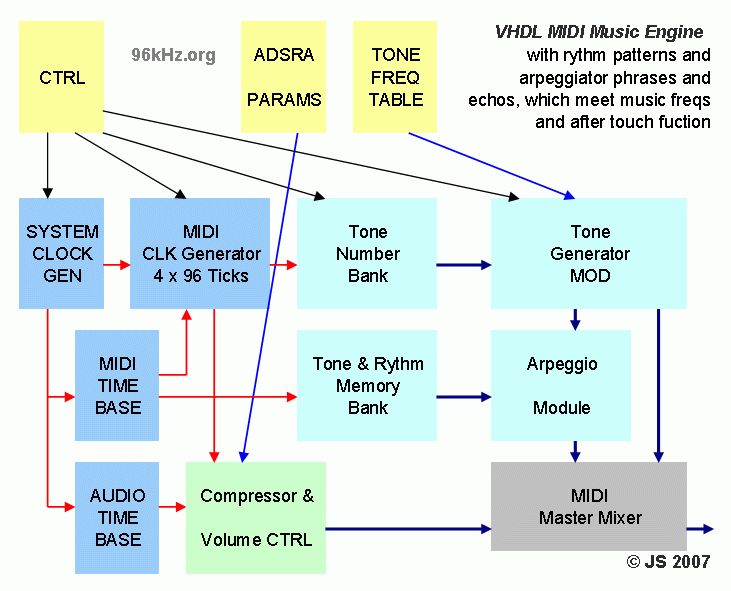 The Music Engine produces MIDI-like tone information, based on pre defined rhythm (see algorithms) and tone patterns which are kept in a memory. The tone notes are copied/doubled according to the ARP pattern, compressed in loudness and modified by the ADSR-module and then sent to the synth module synchronously. 255 Tone Levels = quarter Notes covering 127 MIDI Notes are available. Pure Tuning and Balanced Tuning is available. Midi Routing to internal and external devices with virtual MIDI over S/PDIF 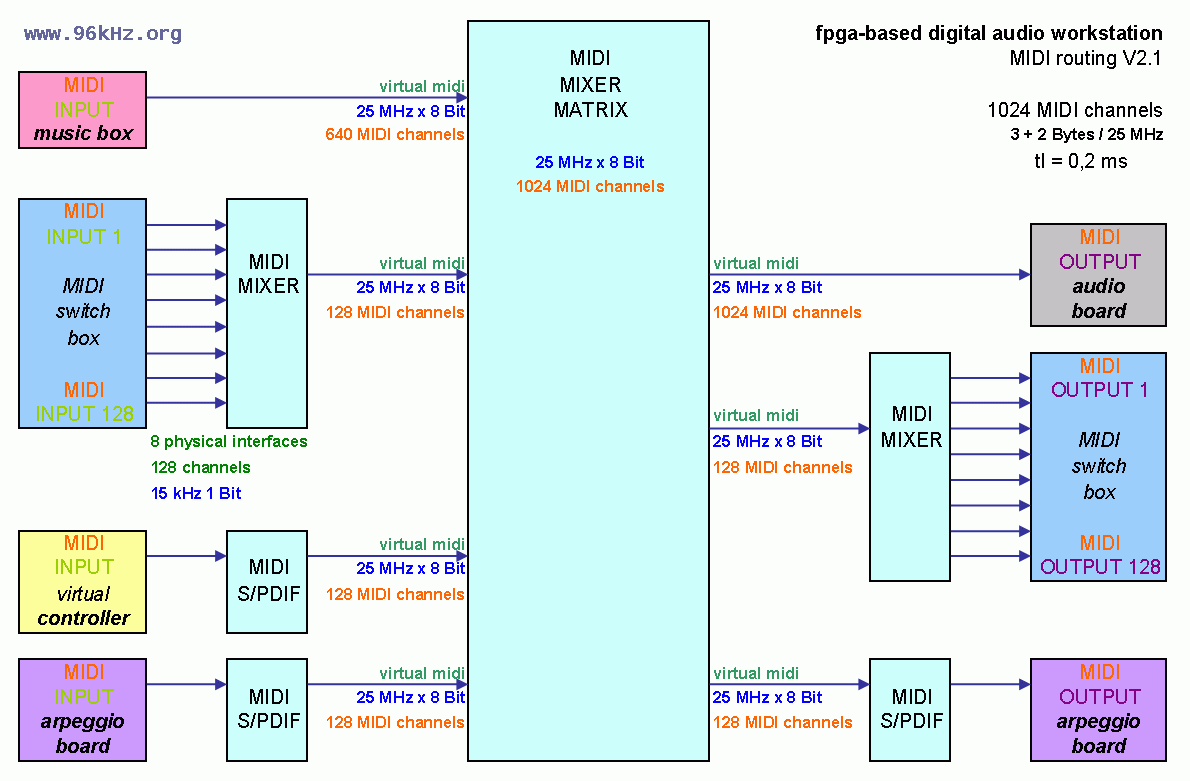 The different boards are interlinked with LVDS parallel bus as well as S/PDIF like LVDS-connection using a virtual MIDI2S/PDIF-converter. With S/PDIF-to-MIDI, standard MIDI-interface can be linked. MIDI-send/MIDI-return is used to plug additional arpeggio boards, as well as real arpeggiators from hardware synthesizers. All MIDI-connections require a two wire line only. In this audio workstation, I use a modified version of my 5 Byte MIDI protocol, containing additional time code and channel information. This is necessary to handle sound channels independently from MIDI channels in the future. Routing information may be attached too for virtual MIDI channel handling. Also 10 Bit and 12 Bit controller data can be sent instead of only 7/8Bit. The difference between the first and the last MIDI channel is only 0,2ms in maximum, even when all 1024 channels are active and sending. Typically 200-300 channels send and receive midi packets of 9-12 bytes in size per tone, so the latency is below 0,1ms leading to inaudible jitter of simultaneously triggered music notes. Music Synthesizer Engine with 4096 voices polyphony 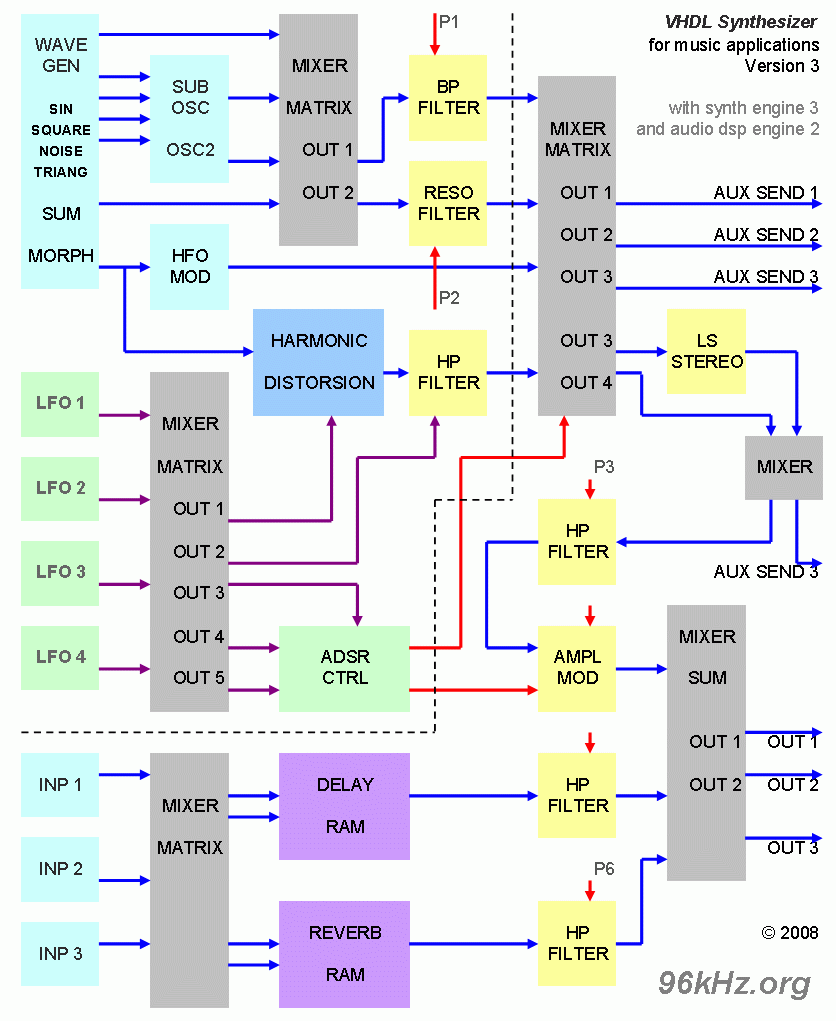 The synthesizer engine takes the MIDI events including ARP notes and produces audio signals for each of the midi channels from generic functions like analytical sine waves, tone banks, or complex DDS-based sound generation. Wave table synthesis is possible (block ram based so far). A modified version of my wavetable module is used for this. Configuring the synthesis module for noise leads to a initial drum computer. Listen to a simple pattern here: Altera Drum Computer Example
Music DSP Engine configurable DSP functions 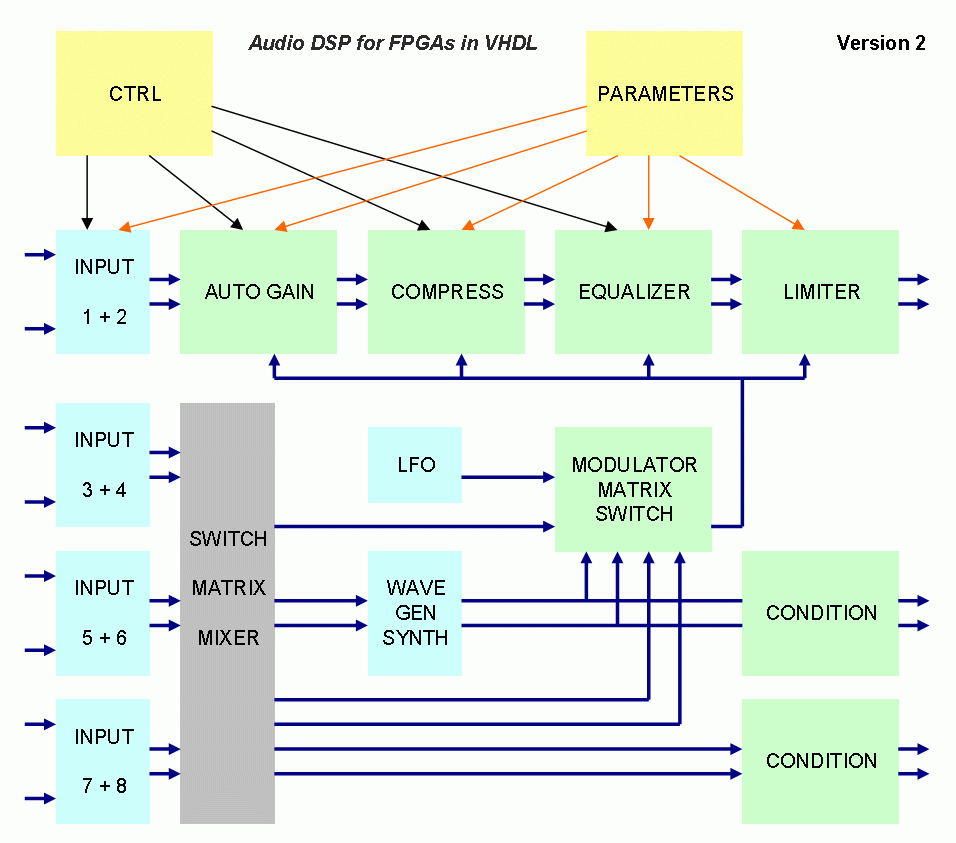 The DSP Engine performs audio processing, compression, limiting and distortion like guitar effects and tube microphone amplification. Also hardware based frequency shifting and reverb is possible. More than one DSP engine can be synthesized using the multi dsp concept for more than one FPGA. 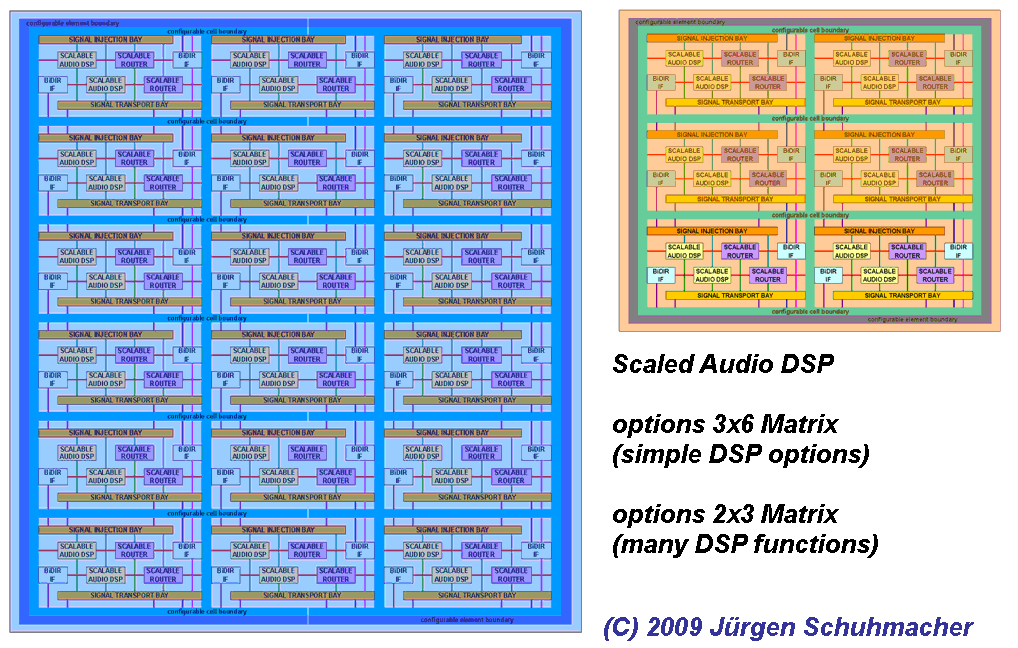 Organization of more than one DSP element in a large FPGA or array of FPGAs Complete Audio Workstation Functional Diagram 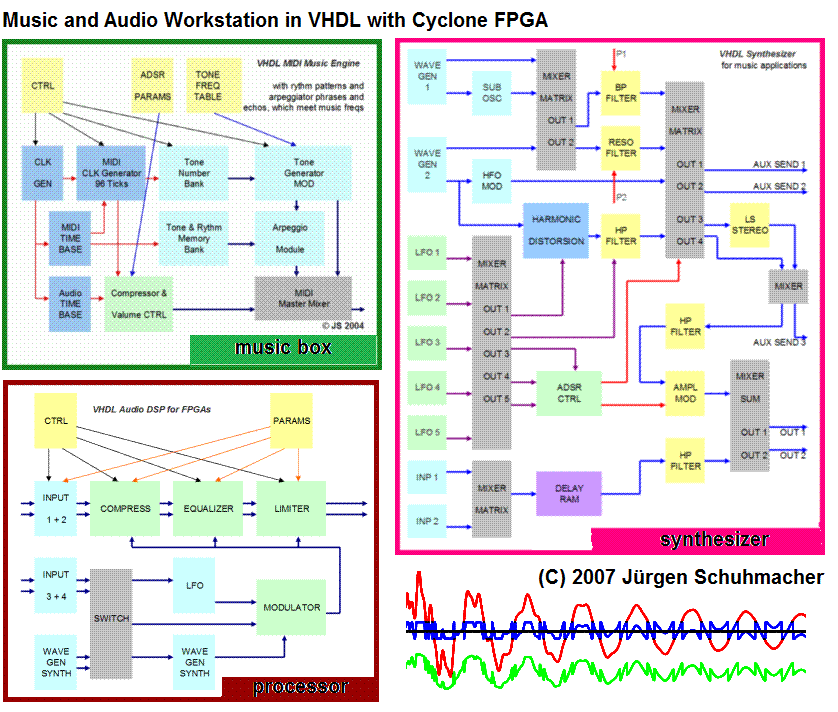 The platform can be configured with any number of DSP and Synthesizer Modules. Here the output of the guitar distortion module is shown. Pyratone GUI - PC Controll 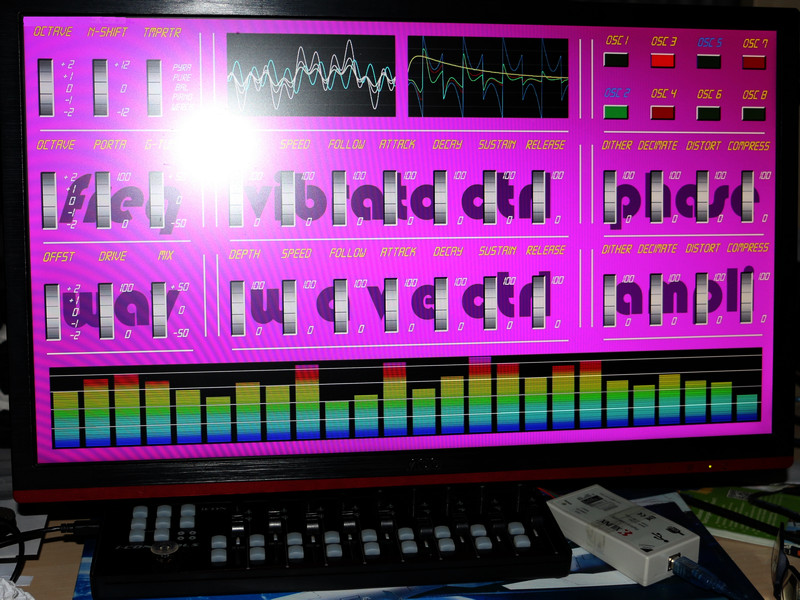 PC-GUI to configure the internal parameters of the synthesis engine. Real Time oscilloscopes show the impact of the controller activity and the resulting wave forms and spectrum. Graphical Spectrum Analyzer 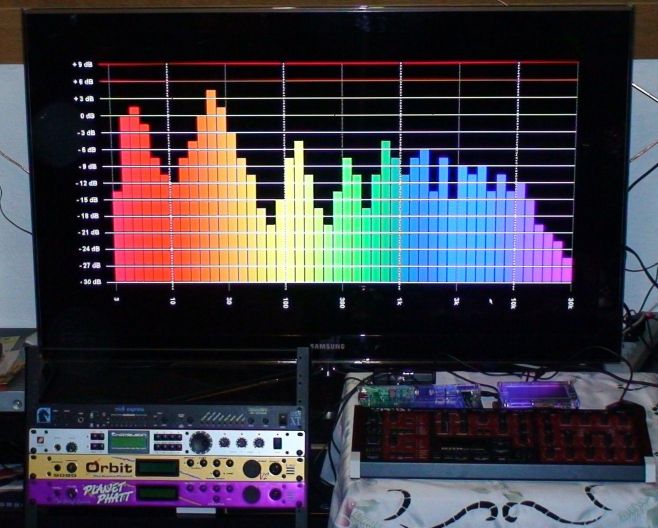 Large scale graphical Spectrum Analyzer with 192 Tap Görzel FFT compressed to 48taps with direct DVI output to 1920x1080 TFT monitor (Samsung TFT TV) by Altera C4 FPGA. Resolution 0,1 dB and better. Sound patch (still image) created with E-mu Orbit 2 + Access Virus B. Live recorded with 1024 oversampling (96MHz Sigma-Delta ADC at 16 Bits) with 21 Bits effectively. Graphical Mixer Representation 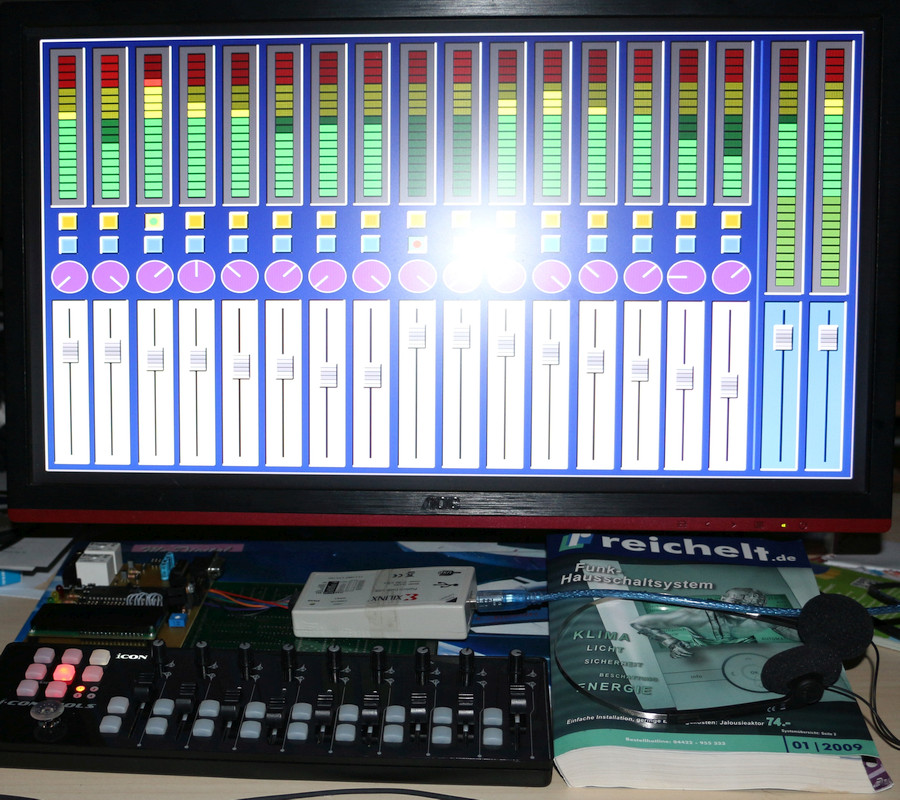 A GUI Console shows the knob positions and mixing states for both MIDI and Audio. Spread Audio Workstation Block Diagram Several S6 FPGAs used to combine the functions of the audio workstation 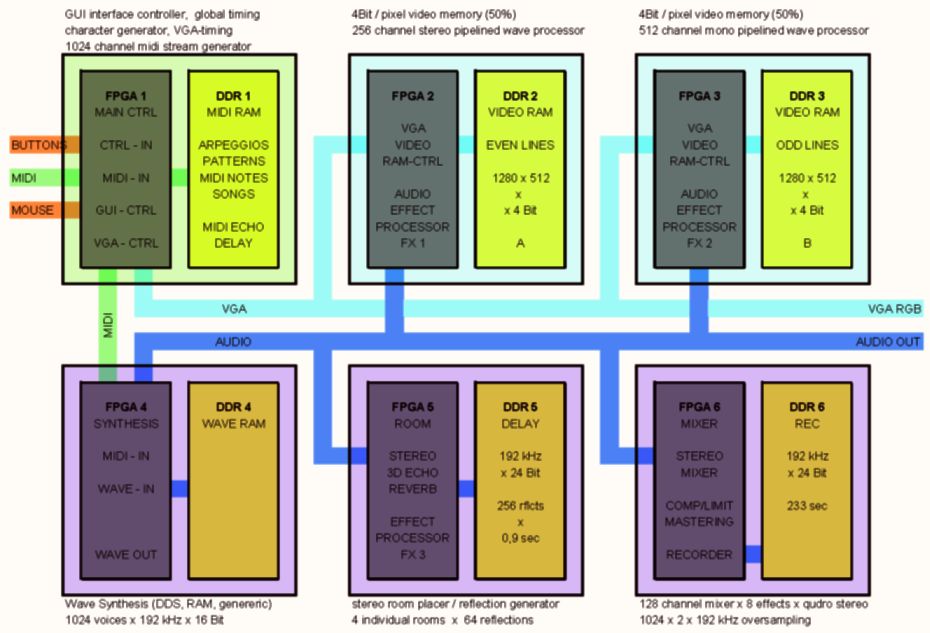 Block diagram of the whole DSP Engine with graphical outputs intended for a Xilinx Spartan 6 Platform. Apart from the standard MIDI and synthesis engine, dedicated audio DSPs can be instantiated to perform echo, delay, reverb and analysis. As an example audio spectrum analysis can be performed through wide FFT if enough FPGA power is reserved. Direct Monitoring of both oscilloscope like signals as well as spectrums are possible. Current design prototype planned design for rack mountable device 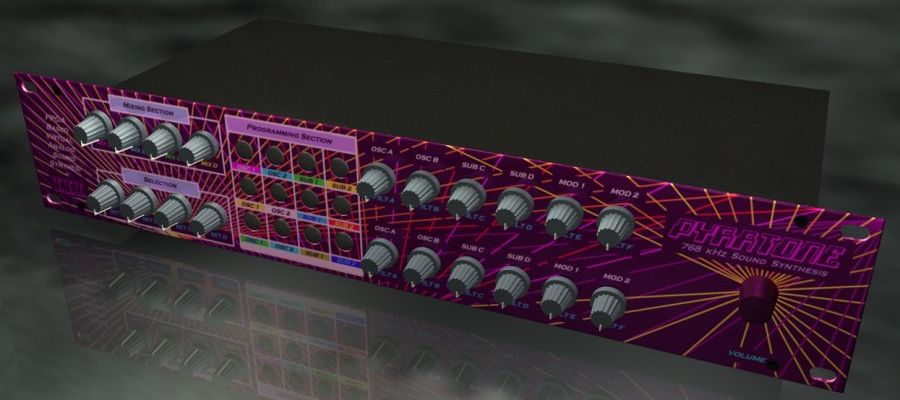 Finalized Hardware Unit planned design for rack mountable device  Sound Demo (Remake of my "NOX" from 1998) Former Version of the Workstation (C3, 192kHz) |
|||||||||||||||||||||||||||||||||||||||||||||
|
|
||||||||||||||||||||||||||||||||||||||||||||||
© Dipl.-Ing. Jürgen Schuhmacher 2011